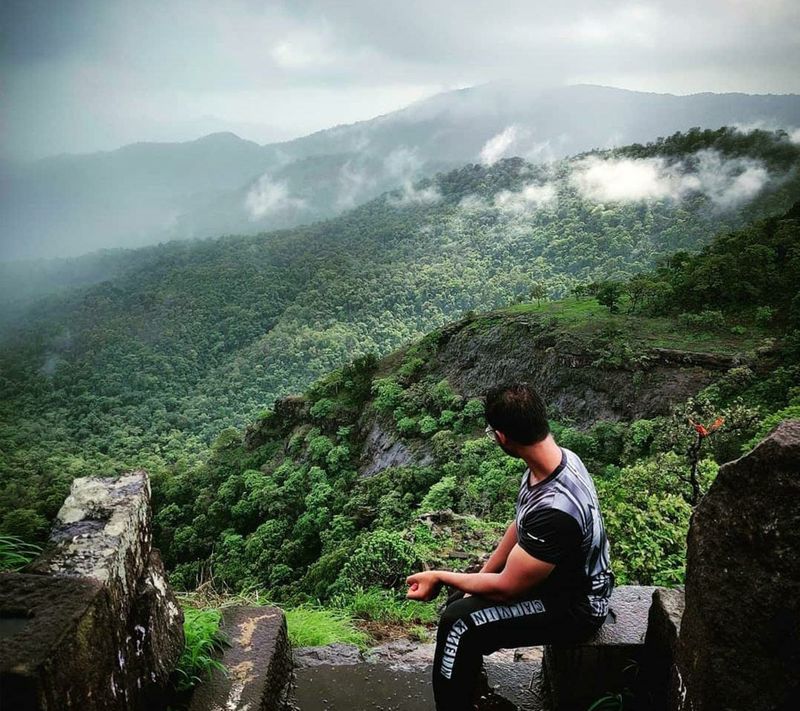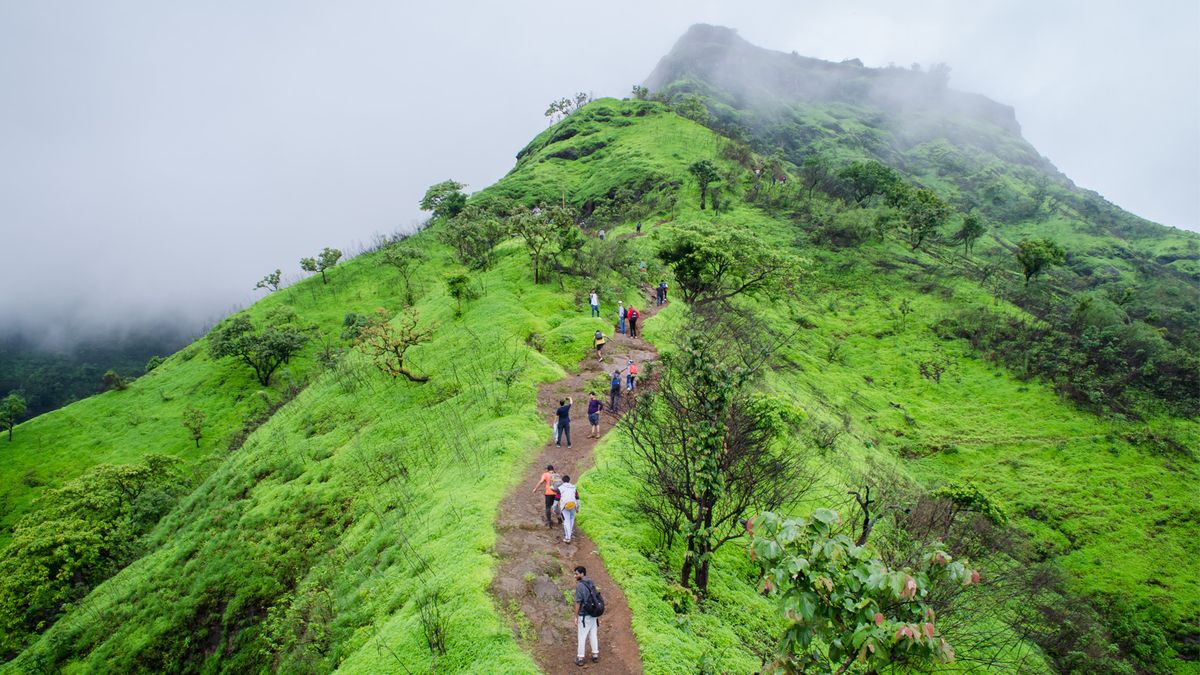I had been trekking in the Sahyadri mountain ranges for around nine months now and was more than confident about the terrain and my skills to summit various forts. I had done over 12 forts in this time including the ones that were hyped on social media and in the trekking community. My first ever trek was Harihar Fort in Nashik in the beginning of November 2020. Later I went on to do many famous ones like Mt. Kalsubai, Kalavantin Durg, Sandhan Valley, and even the infamous Bhairavgad Fort. Nevertheless, never had I ever done a monsoon trek.
So, I contacted Jayesh Behera, one of the finest trekkers I’ve met, to take me on a monsoon trek, and he suggested me to go to Asherigad—as it was beautiful and yet a well-suited beginner level trek for all those who have never trekked in the monsoon before.

How to reach
Asherigad fort is around 100km north of Mumbai, and it took us about two hours to reach there by road. One can see the Kaldurg base village on the way to the fort. The lush green landscapes of Khodkona will teleport you into a realm so peaceful that you would insist on staying there.
History and significance
Asherigad has quite a bit of history to it. As legend says, this fort was originally built by Bhojraj, a descendant of the Shilahara dynasty, around 800 years ago. Later the Portuguese captured it and rebuilt it. During the early 1700s, the Peshwa recaptured the fort. Ultimately, in 1818, the fort came under the British rule.
Standing tall amidst the plateau of Palghar district stretching to the distant horizons, except the few smaller forts around, stands the massive misty mountain, Asherigad. This impressively strong fort covers a huge area, and its magnitude is not even remotely matched by anything around it. Asherigad literally translates to ‘the elder mountain’ and the moment we looked at it, we knew from where it got its name.

Asherigad fort is a masterpiece
Asherigad is, in reality, a medium-sized fort situated at an altitude of 2000 feet; but thanks to its surroundings, it looks bigger than it actually is. Asherigad is a classic example of a fort built in the times when the Marathas ruled over the Sahyadri mountain ranges. There are water tanks huge enough to harvest rainwater till the end of December. Something unusual that this fort offers is the display of half buried cannons in those water tanks. This might be used as a war strategy to hide and protect cannons from the enemy, and before war, they were made accessible by draining the water through the cisterns. The fort also has many holes in the walls hidden from plain sight and usually in or near caves. Moreover, there are caves with platforms that have large openings, but all of them are positioned in such ways that cold air does not enter the cave.
In spite of all of these magnificent features of strategy, one can only find this fort a true example of masterpiece when they connect the dots. The caves mentioned above, used to function as watchtowers, and that is why the cave openings were designed in such a way that if the cave provided shelter to the soldiers, it made sure that the soldiers stayed warm. Furthermore, the holes in the walls that were hidden from plain sight were used to secretly, and yet effectively, deliver emergency messages from one end of to the fort to other. Hence, all these holes were made near the caves.

Trekking route
The route to the top is a two to three-hour hike for people who want to get the perfect social media pictures and breaks but way less, maybe even half, for those who want to rush to the top. Although, in my opinion, it is better to enjoy the journey and meet new people on the way than to sprint all the way up. For when you reach the pinnacle, you don’t really conquer the mountain, you conquer yourself—you conquer the pains, the aches, the fears, you conquer your mind, you go through the grind to reach destinations that virtual travellers only see on screens, and that’s what makes the difference.
The trail head starts near Khodkona village with a dense forest route providing shade to trekkers in the summer, and a natural canopy from rain in the monsoons. The route is clearly marked so there is no chance of anyone getting lost along the way. During or after heavy rains, trekkers usually see small river streams along the way, mostly near the base. Visitors need to be aware of the unusually large mosquitos, also known as “tiger mosquitos” found there. The route later widens, but at the same time, it gets steeper, and relatively tougher, although this path does not last long. The base of the entrance has a huge rock face in the route on which one can find a small sculpture of Ganesh. The final part of the climb has been made easier and therefore accessible to more people by adding a ladder till the top of the fort. From the ladder, it is a 10-minute road to the top. From the top plateau, if you look towards the Southwest, you will be able to see the Kohoj fort. The summit offers a clear view of the skyline, except in the monsoon when clouds seek their own freewill to play around and steal people’s attention. And as usual, the cherry on the cake is sweet.

Asherigad leaves you with everlasting memories
Asherigad, in June 2021, was more than a tour for me, it was a tale. I was more than nervous to go on a monsoon trek even after knowing that I had trekked enough to be at par with people who were experienced. The nervousness was only because of the possibilities that my mind thought of—slipping, falling, getting mud all over you, embarrassing yourself in front of people, etc. But everyone around me in the trekking community encouraged me to not overthink and go for it. On 12th June 2021, when I went back home, I knew I was a true traveller, and not a temporary tourist. My footprints on Asherigad might have faded, but the memories never will. At least the lessons learnt there, never will: When it rains, look for the rainbows, and when it’s dark, search for the stars.




